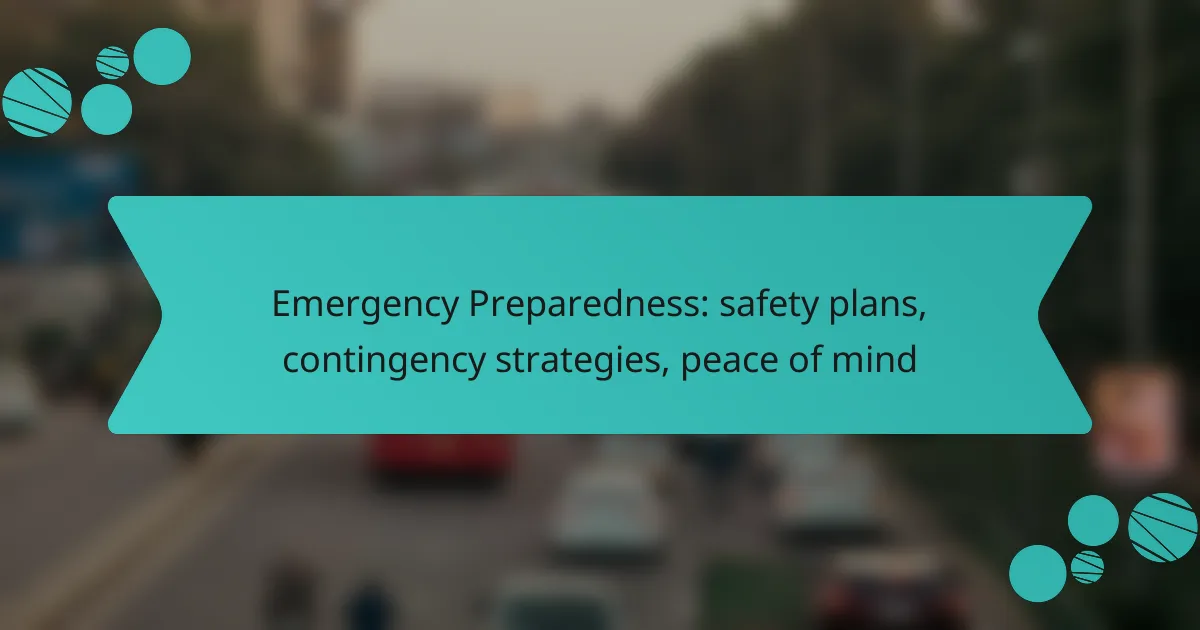Emergency preparedness is crucial for ensuring safety and peace of mind in the face of unexpected crises. By developing structured plans that outline specific actions to take before, during, and after emergencies, individuals and families can effectively minimize disruption and protect themselves. Creating a personal emergency plan tailored to potential risks enhances readiness and fosters confidence in navigating challenging situations.
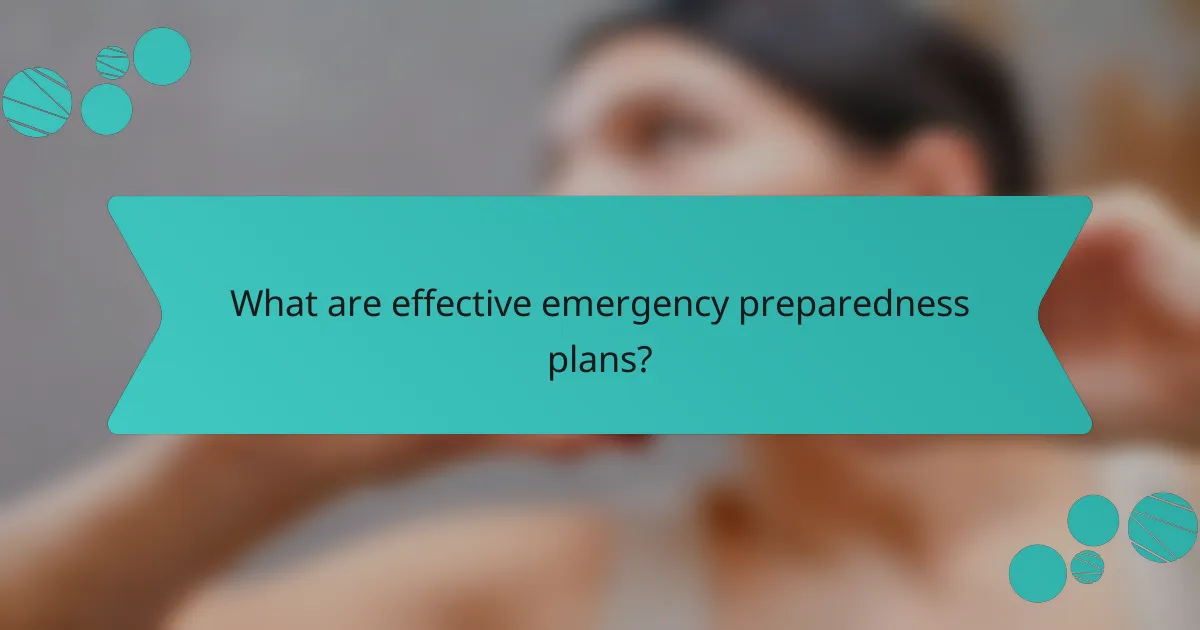
What are effective emergency preparedness plans?
Effective emergency preparedness plans are structured approaches designed to protect individuals, families, and organizations during crises. These plans outline specific actions to take before, during, and after emergencies, ensuring safety and minimizing disruption.
Home safety plans
Home safety plans focus on protecting family members and property during emergencies. Key components include identifying escape routes, establishing a meeting point, and creating an emergency supply kit with essentials like food, water, and first aid supplies.
Regularly review and practice your home safety plan with all family members. Consider including a fire escape plan, severe weather protocols, and procedures for natural disasters relevant to your area.
Business continuity strategies
Business continuity strategies ensure that essential operations can continue during and after an emergency. This includes risk assessments, resource allocation, and developing backup plans for critical functions and personnel.
Implementing a business continuity plan often involves creating a communication strategy for employees and stakeholders, along with identifying alternative work locations. Regular drills and updates to the plan can enhance preparedness and resilience.
Community emergency response plans
Community emergency response plans are collaborative frameworks that involve local governments, organizations, and citizens in preparing for and responding to emergencies. These plans typically include resource sharing, training programs, and coordination among various agencies.
Engaging in community drills and workshops can strengthen these plans. Local governments often provide resources and guidelines to help communities develop effective response strategies tailored to specific risks.
Family communication strategies
Family communication strategies are crucial for maintaining contact during emergencies. Establishing a communication plan that includes designated contacts, preferred methods of communication, and backup options can ensure everyone stays informed.
Consider using group messaging apps or social media for quick updates. Designate a family member as the primary point of contact to streamline information sharing and reduce confusion during a crisis.

How to create a personal emergency plan?
Creating a personal emergency plan involves identifying risks and outlining steps to take during various emergencies. A well-structured plan enhances safety and provides peace of mind for you and your loved ones.
Identify potential hazards
Start by assessing the risks specific to your location and lifestyle. Common hazards include natural disasters like floods, earthquakes, and hurricanes, as well as man-made threats such as fires or chemical spills.
Consider conducting a home safety audit to pinpoint vulnerabilities. For example, if you live in an area prone to wildfires, ensure you have fire-resistant materials and clear vegetation around your property.
Establish emergency contacts
Designate a list of emergency contacts who can provide assistance or information during a crisis. This list should include family members, friends, and local authorities, such as police and fire departments.
Make sure everyone in your household knows how to reach these contacts and keep a printed copy of the list in an easily accessible location. Regularly update the contact information to ensure accuracy.
Create evacuation routes
Map out clear evacuation routes from your home to safe locations. Identify multiple paths in case one route is blocked or unsafe. Familiarize all household members with these routes through practice drills.
Consider local geography and traffic patterns when planning. If you live in a densely populated area, plan for potential congestion and identify alternative routes to avoid delays during an emergency.

What are the key components of a contingency strategy?
A contingency strategy includes essential elements that ensure preparedness for unexpected events. Key components involve risk assessment, resource allocation, and training and drills, all aimed at minimizing disruption and ensuring safety.
Risk assessment
Risk assessment identifies potential threats and vulnerabilities that could impact operations. This process involves analyzing both internal and external factors, such as natural disasters, technological failures, or security breaches.
To conduct an effective risk assessment, organizations should prioritize risks based on their likelihood and potential impact. Common methods include surveys, historical data analysis, and expert consultations.
Resource allocation
Resource allocation involves determining the necessary assets, personnel, and finances required to implement the contingency strategy effectively. This ensures that the right resources are available when needed, minimizing response time during emergencies.
Organizations should consider creating a budget that outlines funding for emergency supplies, personnel training, and communication systems. Regular reviews of resource availability and needs can help maintain readiness.
Training and drills
Training and drills prepare personnel to respond effectively during emergencies. Regular practice helps ensure that everyone understands their roles and responsibilities, which can significantly improve response times and outcomes.
Implementing a schedule for drills, such as fire evacuations or active shooter scenarios, can enhance familiarity with emergency procedures. Organizations should also provide ongoing training to address new threats and incorporate lessons learned from past incidents.
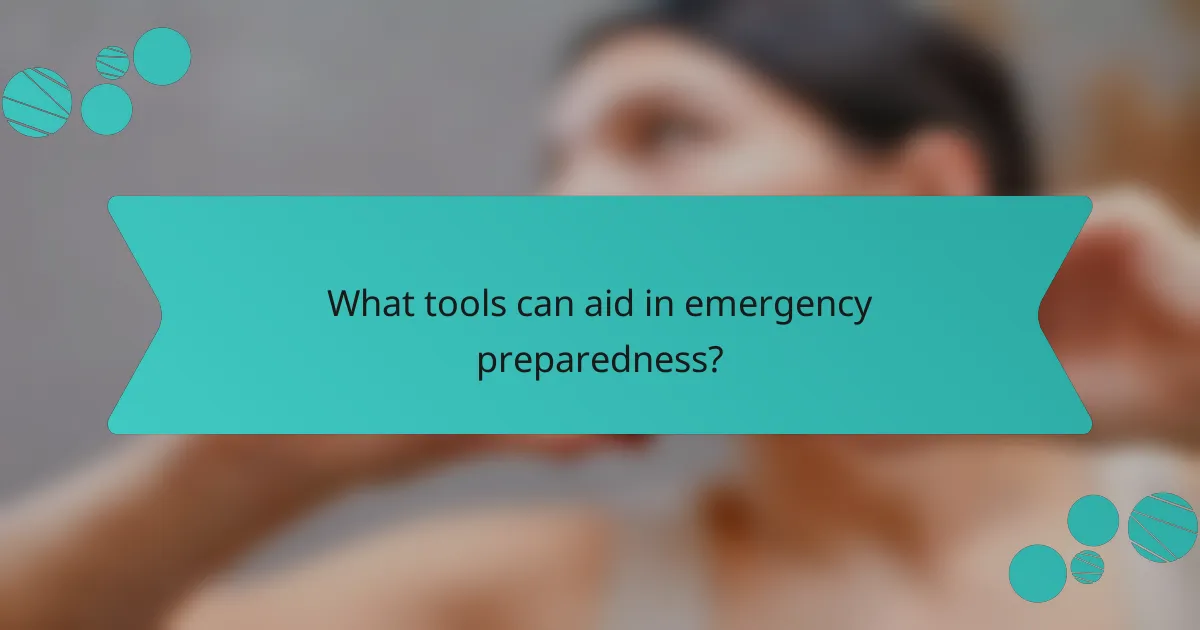
What tools can aid in emergency preparedness?
Emergency preparedness tools are essential for ensuring safety and effective response during crises. Key tools include emergency kits, communication devices, and mobile apps that provide alerts and information.
Emergency kits
An emergency kit is a collection of essential supplies that can sustain you and your family during a disaster. Basic kits should include items like water, non-perishable food, a flashlight, a first aid kit, and necessary medications. Aim for at least a three-day supply of essentials for each person in your household.
When assembling your emergency kit, consider the specific needs of your family members, such as dietary restrictions or medical requirements. Regularly check and update the kit to replace expired items and adjust for changing needs.
Communication devices
Reliable communication devices are crucial during emergencies to stay informed and connected. Battery-operated or hand-crank radios can provide updates when power is out, while mobile phones allow for quick communication with family and emergency services.
Consider investing in two-way radios for areas with poor cell service. Ensure that all devices are charged and have backup power sources, such as portable chargers, to maintain functionality during outages.
Mobile apps for alerts
Mobile apps can enhance emergency preparedness by providing real-time alerts and information about local emergencies. Apps like FEMA, Red Cross, or local weather services can send notifications about severe weather, evacuations, or safety tips.
Download and familiarize yourself with these apps before an emergency occurs. Enable push notifications to receive timely updates, and consider using apps that allow you to share your location with family members in case of separation during a crisis.
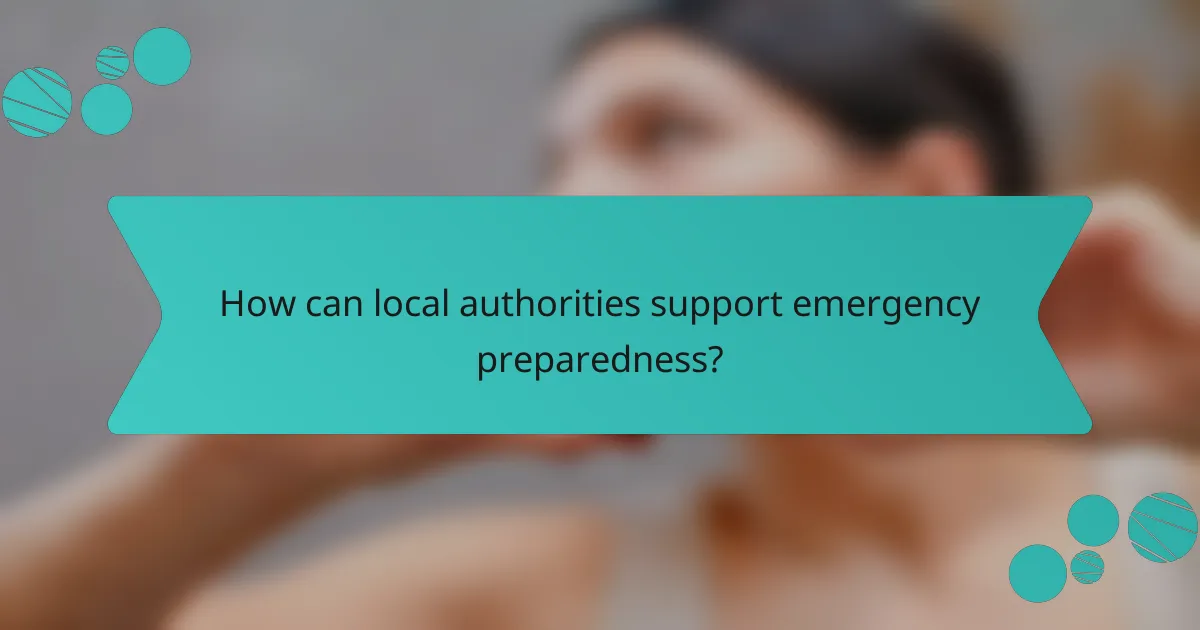
How can local authorities support emergency preparedness?
Local authorities play a crucial role in enhancing emergency preparedness by providing resources, training, and coordination. They implement strategies that empower communities to respond effectively to emergencies, ensuring safety and resilience.
Public training programs
Public training programs are essential for equipping citizens with the skills needed during emergencies. These programs often cover first aid, CPR, and basic disaster response techniques. Local authorities typically offer these sessions free of charge or at a minimal cost to encourage participation.
To maximize effectiveness, training sessions should be accessible and tailored to the community’s specific risks, such as floods, fires, or earthquakes. Regularly scheduled classes ensure that knowledge remains fresh and that new residents can participate.
Emergency response teams
Emergency response teams, often organized by local authorities, are composed of trained volunteers and professionals ready to act in crises. These teams are crucial for immediate response and can include firefighters, paramedics, and search-and-rescue personnel.
Local authorities should ensure these teams are well-equipped and regularly trained to handle various scenarios. Collaboration with neighboring jurisdictions can enhance their capabilities, allowing for shared resources and expertise during larger emergencies.
Community workshops
Community workshops provide a platform for residents to learn about emergency preparedness and develop personal safety plans. These workshops often include discussions on creating emergency kits, evacuation routes, and communication strategies with family members.
Encouraging community engagement in these workshops fosters a culture of preparedness. Authorities can partner with local organizations to host events, making them more appealing and accessible to diverse populations. Regularly updating the content to reflect current risks and best practices is also vital for relevance.
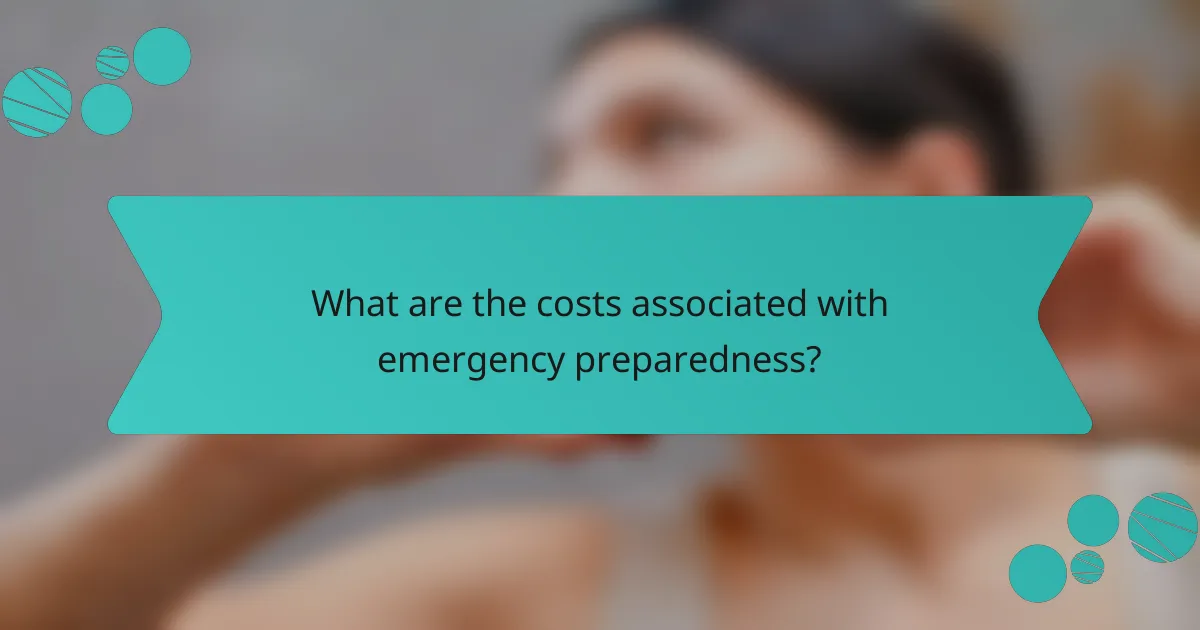
What are the costs associated with emergency preparedness?
The costs associated with emergency preparedness can vary widely based on individual needs and local regulations. Key expenses typically include supplies, training, and potential upgrades to home safety features.
Budgeting for supplies
When budgeting for emergency supplies, consider essential items such as food, water, first aid kits, and communication tools. A reasonable estimate for a basic emergency kit can range from $50 to $200, depending on the number of people and duration of preparedness.
To effectively budget, prioritize items based on your specific risks and needs. For example, if you live in an area prone to natural disasters, investing in durable water storage and weather radios may be more critical than other supplies.
Regularly review and update your supplies to ensure they remain usable and relevant. Create a checklist of items to replenish or replace, and set aside a small monthly budget to gradually build your emergency stockpile.
